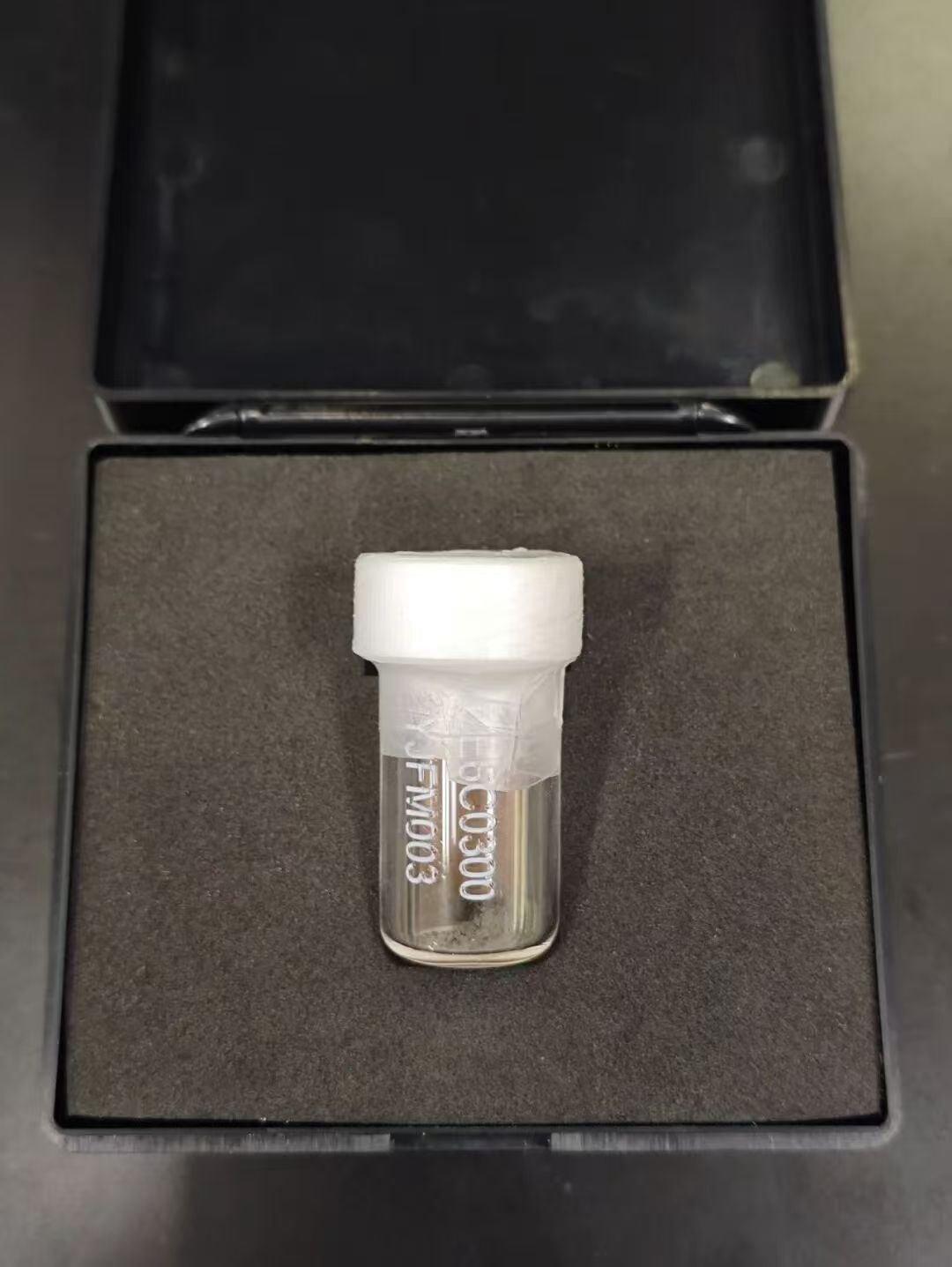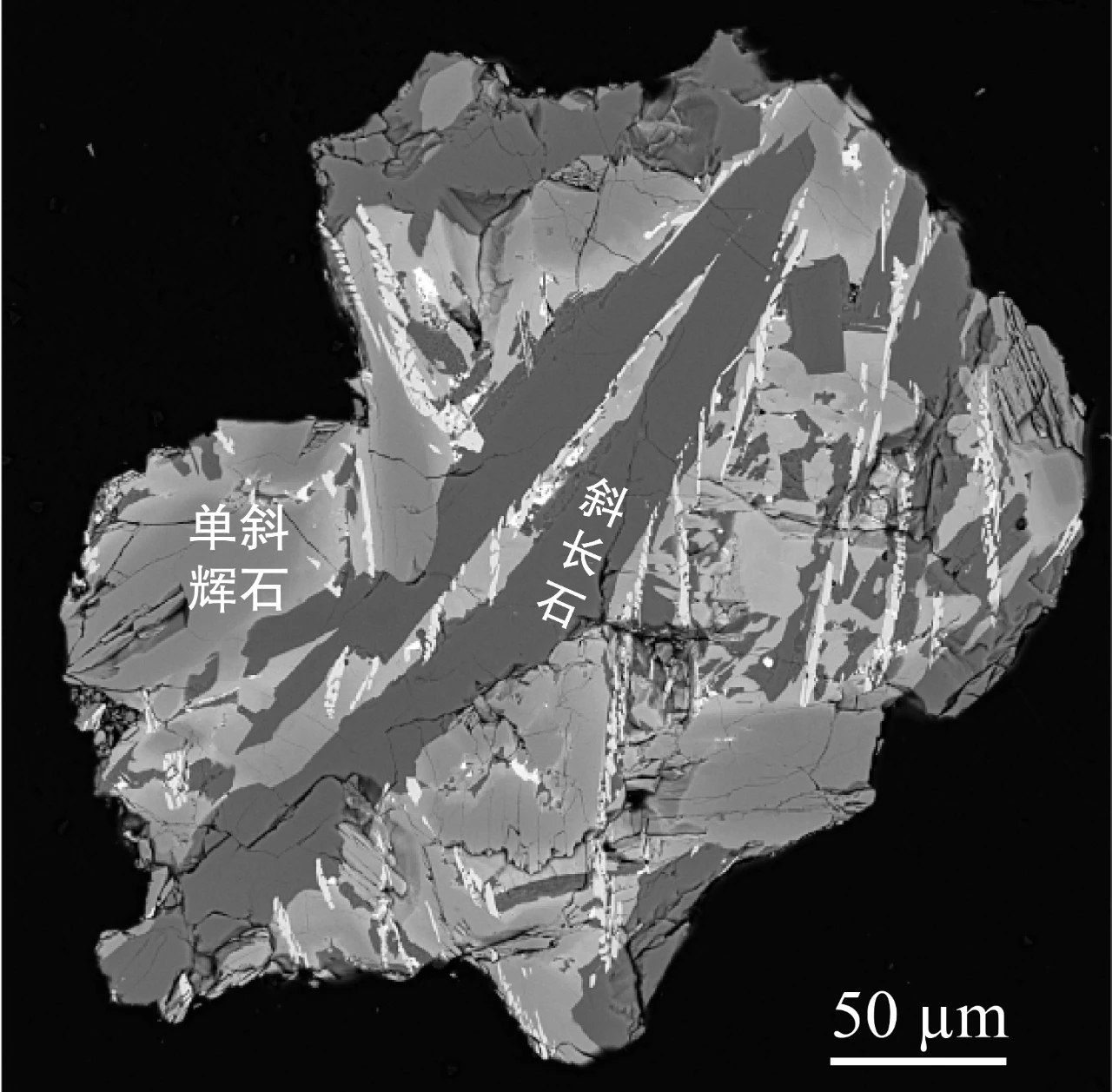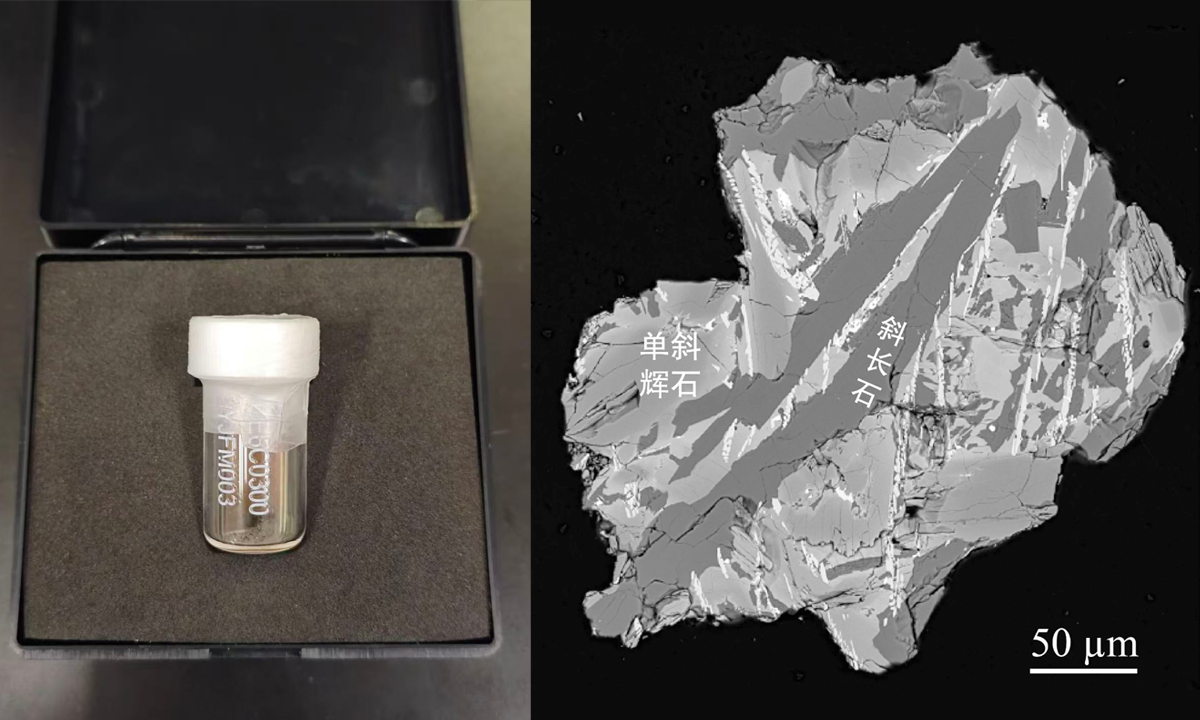
Lunar soil sample collected by Chang’e-6 Photo: Courtesy of China National Nuclear Corp

Clinopyroxene and plagioclase of the basalt samples collected by Chang’e-6 Photo: Courtesy of China National Nuclear Corp
The lunar farside mantle is relatively colder than the nearside mantle, Chinese scientists have, for the first time, discovered based on samples collected from the lunar far side by China’s Chang’e-6 mission, China National Space Administration (CNSA) and China Atomic Energy Authority jointly released on Monday, which marks the traditional Chinese Mid-Autumn Festival (a traditional Chinese holiday that originates from worship of the moon).
The latest research findings provided critical scientific data that deepen humanity’s understanding of the dual nature of the moon and its evolutionary processes.
The dual nature of moon – marked by the significant differences between the moon’s near and far sides – is considered one of the most pivotal scientific mysteries in lunar exploration.
He Sheng, a researcher at the Beijing Research Institute of Uranium Geology under the China National Nuclear Corp, explained to the Global Times that previous studies have identified stark contrasts in topography, elemental distribution, and rock characteristics between the two sides of the moon.
“For instance, the near side is relatively flat and expansive, while the far side is riddled with ravines, canyons, and cliffs, featuring greater topographic variation. The near side hosts numerous maria – flat basaltic plains formed by early volcanic activity, covering over 30 percent of its surface, whereas the far side has only 1-2 percent maria. Additionally, the near side is richer in radioactive elements, while the far side is relatively depleted. This ‘dual nature’ is believed to be closely tied to the moon’s formation and evolutionary history,” said He.
The latest finding that the far side’s mantle is colder than the near side’s mantle further enriches our understanding of this “duality,” said He.
“Previous studies on the moon’s ‘duality’ primarily relied on remote sensing, geophysical detection data, and numerical simulations, but the lunar farside soil samples brought back by Chang’e-6 have given us the opportunity to conduct close-up, direct research into the differences between the moon’s near and far sides,” He noted.
The research team of He explored the temperature variations between the mantles of the near and far sides by analyzing the composition of typical minerals like clinopyroxene and plagioclase in the lunar soil samples from the far side. Using three different thermobarometers, they calculated the crystallization temperatures and pressures of these minerals and simulated the crystallization process of Chang’e-6 basalt through petrological modeling.
Their findings revealed that the crystallization temperature of the Chang’e-6 basalt samples is approximately 1,100 C, about 100 C lower than those samples from the near side, such as those from Chang’e-5. This study provides rock-based and geochemical evidence for the temperature differences between the mantles of the moon’s near and far sides.
“The moon’s relatively low degree of evolution and its late-stage modification features make it a valuable reference for studying Earth’s past history. The significant differences between its near and far sides should also offer insights into Earth’s evolution,” Li Ziying, chief scientist at the China National Nuclear Corp, told the Global Times.
Li emphasized that research into the moon’s “dual nature” holds profound scientific significance, and deeper exploration requires far-side soil samples, which is an opportunity provided by the Chang’e-6 mission, whose samples hold unique value.
“Some hypothesize that the higher radioactive element content on the moon’s near side may be linked to a warmer mantle compared to the far side,” Li added. Further studies of this rare farside sample could yield additional discoveries and research breakthroughs in the future.
The finding that the moon’s farside mantle is “colder” than the near side was a collaborative effort by the Beijing Research Institute of Uranium Geology under the China National Nuclear Corp, Peking University, and Shandong University. The results have been published on the website of the prestigious international journal Nature. This marks another cross-industry, cross-disciplinary achievement for the nuclear-aerospace team at the China National Nuclear Corp, following their 2022 discovery of a new mineral, which has been named Changesite-(Y), in lunar soil research.

